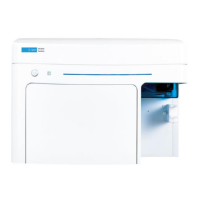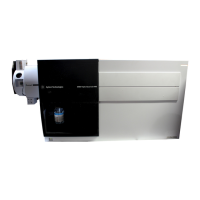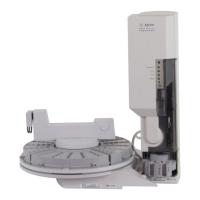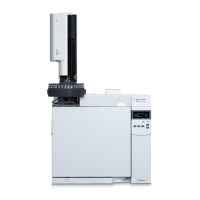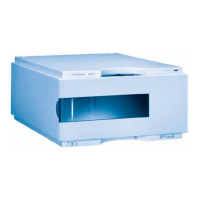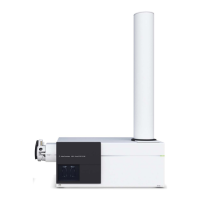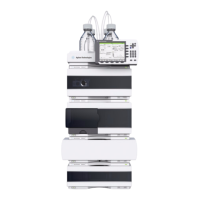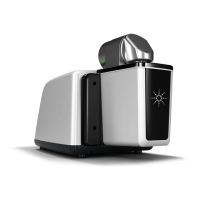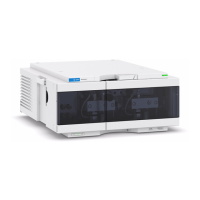Theory 7
Agilent Nano Indenter G200 User’s Guide 7-17
Hardware Considerations
• The highest frame stiffness is achieved using the XP head and
standard tray.
• The DCM head has a frame stiffness that is typically an order of
magnitude smaller than the XP head, due to the fact it is mounted on
a Z-drive. The XP head is rigidly fixed to the gantry.
• NanoVision stage has a slightly lower frame stiffness than the
standard stage.
Frame Stiffness Summary
1 Instrument frame stiffness is a single value, K
f
, which represents the
stiffness of the instrument; the instrument and contact being modeled
as two springs in series.
2 If the frame stiffness is known, it is possible to predict how much of
the measured displacement occurs in the equipment and how much
occurs at the contact site.
3 Normally, frame stiffness is determined using the same battery of
tests on fused silica that are used to determine area function.
4 The frame stiffness is calculated as the inverse of the intercept of
total compliance vs. the inverse of the square root of load.
5 High-force results are the most valuable for accurately determining
frame stiffness.
6 If the contact stiffness is less than 0.1K
f
, then results will not be
sensitive to normal variations in K
f
.
7 If the contact stiffness is greater than 0.1K
f
, then special
consideration must be given to the determination of frame stiffness.
8 Samples should be mounted so that the mounting does not
significantly compromise frame stiffness.
Determining Indenter Area Function
The indenter area function, A= f(d), is a functional description of the
geometry of the part of the indenter (
Figure 7-10 on page 7-18) that is
designed to be in contact with a test material.
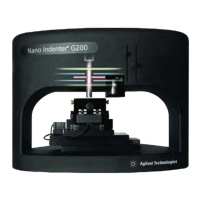
